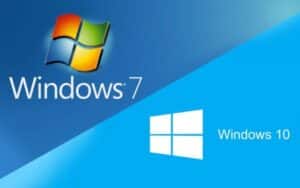Imagine this: It’s a busy Monday morning, and your entire office grinds to a halt because your server has crashed. Panic sets in as you watch the hours tick by, knowing that every minute of downtime costs you money and damages your reputation.
This nightmare scenario continues to affect many small businesses across the UK. In 2023, businesses lost around £3.7 billion and over 50 million hours of productivity due to internet failures. While detailed figures for 2024 are still being consolidated, early indications suggest that downtime costs and disruptions remained significant.
Small businesses that relied on off-site data storage were particularly vulnerable, with a notable percentage experiencing server downtime in the past year. Now in 2025, as digital dependency intensifies, the stakes are higher than ever.
That’s why it’s crucial to know how to choose the best IT support provider for your small business. A reliable provider can not only prevent costly outages but also ensure seamless operations, protect your data, and help your business thrive in an increasingly competitive landscape.
In this guide, we’ll walk you through the essential steps to identify and select the right IT support partner tailored to your needs.
The impact of IT downtime
The consequences of downtime can be severe. For instance, 10% of businesses reported a critical impact on their ability to operate, while 6% faced significant disruption. Even moderate impacts, experienced by 26% of businesses, can hurt productivity and customer satisfaction. On average, the cost of downtime across all industries has soared to about $9,000 per minute, with smaller businesses facing costs between $137 to $427 per minute, according to Pingdom.
Businesses relying on consumer internet services suffered double the downtime (30 hours on average) compared to those using business connections (16 hours). Despite this, 51% of micro-businesses and 80% of sole traders still use broadband services designed for home use, highlighting a critical vulnerability in their IT infrastructure.
Small and medium-sized enterprises (SMEs) bore the brunt of internet disruptions in 2023, enduring an average of 3 to 4 failures and 19 hours of downtime each. This translates to more than two working days lost annually, or about 1% of their productive time. The hospitality, IT, and manufacturing sectors experienced the highest levels of internet downtime and the biggest financial impact. For example, hospitality businesses lost an average of 27 hours to downtime in 2023, while IT companies faced losses amounting to £555 million due to connectivity failures.
Furthermore, a study found that 93% of small businesses file for bankruptcy within a year after a severe data loss, often due to IT downtime. IT downtime costs an average of £4,300 per incident, or £258,000 per hour. Additionally, a staggering 545 hours of staff productivity are lost annually because of IT outages.
The role of reliable IT support
But it doesn’t have to be this way. Reliable IT support solutions for small businesses are:
- The backbone of any modern enterprise
- Ensuring smooth operations
- Safeguarding valuable data
- Allowing you to stay competitive in an increasingly digital world.
Many small businesses struggle to manage their own IT due to limited resources, lack of in-house expertise, or the prohibitive cost of hiring a full-time IT team.
That’s where the right IT support provider comes in. They can be your lifeline, resolving issues quickly, preventing costly downtime, and providing expert guidance on everything from cybersecurity to cloud solutions.
Steps to finding the perfect IT support partner
In this guide, we’ll walk you through the essential steps to finding the perfect IT partner for your small business. We’ll cover everything from understanding your needs and the different types of support available to the key questions you should ask potential providers. By the end, you’ll be equipped with the knowledge you need to make an informed decision and ensure your business’s technology is in safe hands.
Define your needs
Before you start researching IT support providers, it’s important to understand your specific needs clearly. This will help you choose a provider who can truly meet your requirements and avoid overpaying for services you don’t need.
Start by taking an inventory of your existing IT systems. This includes:
- Hardware: List all computers, servers, printers, and other devices.
- Software: Detail all operating systems, applications, and cloud-based services.
- Network: Describe your network infrastructure, including routers, switches, and Wi-Fi access points.
Next, identify your pain points. What IT problems do you regularly encounter? Are your computers running slow? Do you experience frequent downtime? Have you had any cybersecurity scares?
Consider your goals for your IT infrastructure. Do you want to improve efficiency? Enhance security? Prepare for future growth?
Finally, determine your budget. How much are you willing to spend on IT support? Be realistic, but remember that investing in good IT support can save you money in the long run by preventing costly downtime and data loss.
Evaluating IT support providers: Key insights for small businesses
After taking initial steps to identify potential IT support providers, it’s essential to evaluate their capabilities and reliability thoroughly. Here you have practical tips to ensure your chosen IT support partner meets your business’s unique needs.
On-site visits and facility tours
- Visit their office: Schedule a visit to learn about their work environment and infrastructure and gain insight into their operational setup.
- Facility tour: Request a tour of their data centre (if applicable) to see where your data will be stored and managed. This helps assess their security measures and overall organisation.
Client interaction and feedback
- Interview current clients: Obtain a list of current clients and interview them about their experiences. This provides firsthand feedback on the provider’s reliability and service quality.
- Client events: Attend client events or webinars hosted by the provider to observe their interaction with clients and industry knowledge. This can also highlight their community engagement and expertise.
Disaster recovery plans
- Review DR plans: Ensure the provider has robust disaster recovery plans in place, safeguarding your business against data loss and downtime.
- Test DR capabilities: Ask if they conduct regular tests of their disaster recovery processes and can provide documentation of past tests. This ensures their plans are not just theoretical but practical and effective.
Technological partnerships and tools
- Check partnerships: Verify partnerships with leading tech companies like Microsoft, Cisco, or AWS, indicating access to advanced technologies and training.
- Tool demonstrations: Request demonstrations of the tools and software they use for IT management. This can reveal their technological capabilities and how they align with your needs.
Staff training and certifications
- Continuous training: Inquire about the continuous training programmes for their staff, ensuring they stay updated with the latest technologies and best practices.
- Certifications: Ensure their technicians hold relevant and up-to-date certifications, indicating a high level of expertise and professionalism.
Innovation and future-readiness
- Adoption of new technologies: Assess their commitment to adopting and integrating new technologies, ensuring they can offer innovative solutions.
- Future-proof solutions: Check if they offer scalable solutions that can grow with your business, ensuring long-term compatibility and support.
These practical tips will help ensure you select an IT support provider who is competent and a good fit for your business. This approach helps build a more resilient and efficient IT infrastructure, supporting your business’s growth and success.
Types of IT support providers
There are two main types of IT support providers:
- Break-fix support: This is the traditional model, where providers charge for each repair or service call. It’s a good option for businesses with minimal IT needs or a tight budget. However, the costs can be unpredictable, and the reactive nature of this model means you’ll only get help when something goes wrong.
- Managed IT services: This model involves paying a fixed monthly fee for proactive monitoring, maintenance, and support. This approach is more preventive and can help identify and resolve issues before they become major problems. It offers predictable costs and comprehensive services but can be more expensive for businesses with minimal IT needs.
Other options include:
- Cloud-based IT support: Outsourcing IT support to a provider who manages your systems remotely. This is often a cost-effective option for small businesses.
- Per-user pricing: Some providers charge based on the number of users needing support. This can be a good choice for businesses with a fluctuating workforce.
The best option for you will depend on your specific needs and budget. When selecting an IT support provider, consider the reasons to outsource IT support to ensure you’re making the most efficient choice for your business needs.
Factors to consider
When evaluating potential IT support providers, consider the following factors:
- Experience and expertise: Look for providers with a proven track record and industry-specific certifications. Ask about their experience working with businesses similar to yours.
- Response time and availability: How quickly can they respond to emergencies? Do they offer 24/7 support? Find out their average response time and what kind of support they offer outside of regular business hours.
- Communication and transparency: Choose a provider who communicates clearly and proactively. They should keep you informed about any issues, updates, or potential risks.
- Pricing and service level agreements (SLAs): Compare pricing models and make sure you understand the terms of any service level agreements. SLAs outline what services are included, response times, and what happens if the provider fails to meet their obligations.
- References and reviews: Don’t just take the provider’s word for it. Read online reviews and ask for references from other small businesses.
A few questions to ask potential IT support providers
To further assess their suitability, ask potential providers the following questions:
- How long have you been in business?
- What industries do you specialise in?
- What’s your average response time?
- Can you provide references from similar businesses?
- What security measures do you have in place to protect my data?
- How do you keep your team up-to-date with the latest technologies?
- Can you scale your services as my business grows?
- What is your pricing structure, and what does it include?
- Do you offer any guarantees or service-level agreements?
- What happens if I need more than your services?
By thoroughly assessing your needs and carefully evaluating potential providers, you’ll be well on your way to finding the perfect IT support partner for your small business.
Conclusion
Choosing the right IT support provider is a critical decision for your small business. By carefully assessing your needs, understanding the different types of support available, and thoroughly evaluating potential providers, you can find a partner who will keep your technology running smoothly and securely.
Remember to consider factors like experience, responsiveness, communication, pricing, and references when making your decision. Feel free to ask potential providers the tough questions to ensure they’re the right fit for your business.
At Computercentric, we understand the unique challenges faced by small businesses in the UK. That’s why we offer tailored IT support solutions designed to meet your specific needs and budget. Our experienced team is committed to providing reliable, proactive support so you can focus on what you do best – running your business.
One of our clients, a small retail business, was struggling with frequent downtime and cybersecurity threats. After partnering with Computercentric, they saw a 50% reduction in IT-related issues and a significant increase in their overall productivity. This success story is just one example of how our managed IT services in the UK can transform your business.
If you’re ready to take the next step, we invite you to download our free IT Support Provider Checklist. This comprehensive guide will help you compare different providers and make an informed decision.
And if you’d like a personalised consultation to discuss your specific IT needs, don’t hesitate to contact us. Use the CALL, WHATSAPP, or EMAIL buttons below to reach out. We’re here to help you find the perfect IT support partner for your business’s success.







